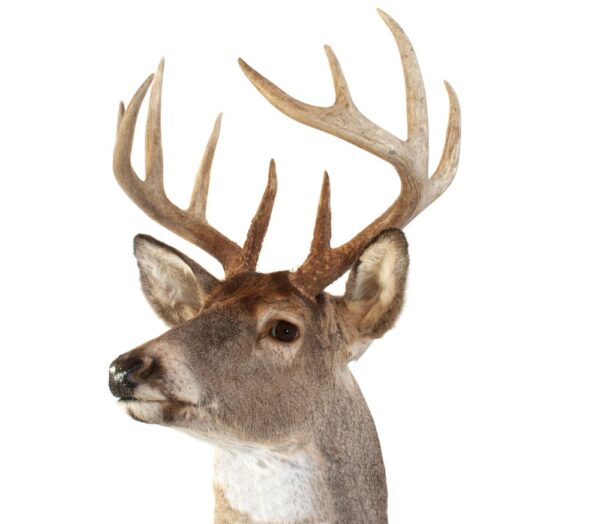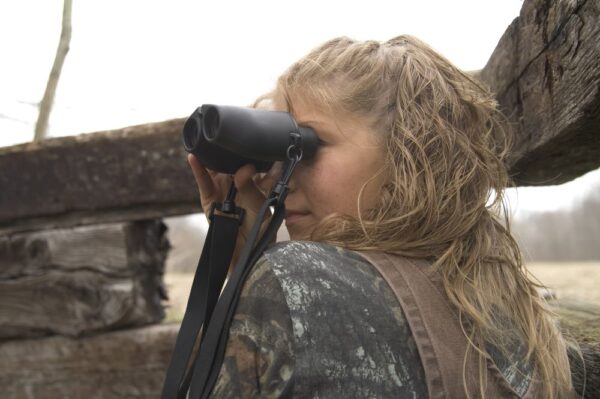Scoring a harvested deer is an essential component in the post-hunt analysis process for hunters seeking to evaluate their success accurately. Understanding the quality metrics behind scoring allows hunters to assess their ability to target mature animals that have reached their prime age. Let’s learn how to score a deer.
By applying standardized scoring systems like Boone and Crockett (B&C) or Pope and Young (P&Y).), hunters can objectively quantify the size and quality of their deer specimens. Scoring considers various factors, such as antler size, shape, and symmetry, providing a comprehensive snapshot of the animal’s overall health and genetic potential. Measuring and scoring a deer’s antlers is crucial for hunters wanting to understand the size and quality of their kill.
The scoring systems promote ethical hunting practices by encouraging selective harvesting. Hunters are incentivized to pursue mature bucks and allow younger males to reach their full potential before harvest by setting minimum score requirements for record books or achievement programs.

Understanding Deer Scoring Basics
Deer scoring is a method used to measure the size and quality of a deer’s antlers, with the Boone and Crockett (B&C) system being the most widely accepted for scoring whitetail deer. To grasp the basics of deer scoring, it’s crucial to understand the different parts of a deer’s antlers and how they are measured.
The main parts of a deer’s antlers include the main beams, points, and circumference measurements. The main beams are the long, straight antlers’ sections extending from the base to the tip. These beams are fundamental in determining the overall score, as their length and mass significantly contribute to the final tally.
Points, also known as tines, are the projections that arise from the main beams. Each point is measured from its base to the tip, and the number and length of these points can greatly influence the score.
Circumference measurements are taken at specific points along the main beams to assess the mass of the antlers. These measurements provide a comprehensive view of the antler’s size and robustness, which are key indicators of the deer’s health and genetic potential.
Understanding these basic components and their measurements is the first step in learning how to score a buck accurately.
Understanding Scoring Systems

Boone and Crockett (B&C) scoring system, widely used in North America
The Boone and Crockett scoring system is a renowned method of evaluating the quality of a deer’s antlers. It was established by the Boone and Crockett Club, an organization dedicated to conservation and fair chase hunting.
This scoring system focuses on three key measurements: main beams, tine length, and inside spread. Main beams are one of the fundamental elements in determining a deer’s score.
They refer to the central shafts or stalks that extend from the bases to the tips of each antler. Measurements are taken along the top curve of these beams, commencing from their bases to their tips. It is also crucial to take four circumference measurements at the smallest points between various tines and the burr.
Explanation of typical and non-typical categories for antler scoring
Antlers can be classified into two categories for scoring purposes: typical and non-typical. Typical antlers have symmetrical racks that conform to a standard pattern, with matching points on each side of a mirror-image-like structure. A normal point arises symmetrically from the main beam and meets specific measurement criteria.
Non-typical antlers deviate from this symmetrical pattern due to abnormal growth factors, resulting in extra points, unusual configurations, or distinctive characteristics. Non-typical antlers are generally assessed separately from typical antlers.
To calculate the score of a typical rack, measurements of main beams, tine lengths, and inside spread are added together without any deductions. However, deductions are made for asymmetry or abnormality when scoring a non-typical rack in the Boone and Crockett system to ensure fairness and consistency.
Measuring antlers at the widest point
Tools needed for accurate measurement
Accurate measurement of the antlers requires the use of specific tools. First and foremost, a flexible tape measure is essential to obtain precise measurements. The tape measure should have imperial and metric units to accommodate different scoring systems. Calipers with fine-pointed jaws are also necessary to measure the smallest details accurately.
Calipers allow for more precise measurements of tine length and circumferences than tape measures alone. A scorer’s guidebook is crucial for referencing detailed instructions on accurately scoring each specific aspect of the antlers.

Step-by-step process to measure main beams, tine length, and inside spread
To begin measuring the main beams of a deer’s antlers, place the tape measure at the base where it emerges from the skull and follow along its curvature until reaching the tip. Ensure the tape is tight against any curves or bends but not so tight that it compresses or distorts any part of the antler.
To measure the tine length, locate each point extending from the main beam and hold your calipers perpendicular to determine its length accurately. Start at its base, where it meets the main beam, and carefully adjust the calipers until they touch both ends of each tine.
Inside spread refers to measuring the distance between the inner edges of each main beam at its widest point when viewed head-on. Place your flexible tape horizontally across these points while ensuring it remains level throughout. To avoid common errors, measure perpendicular to the center line.
Scoring Non-Typical Antlers
Identifying and Measuring Abnormal Points
Accurately identifying and measuring abnormal points or deviations from the typical pattern is crucial when scoring non-typical antlers. Abnormal points grow in unusual directions or positions, deviating from the symmetrical pattern of a typical antler. On the other hand, sticker points are small projections growing off the main points without significant length.
To differentiate between abnormal and sticker points, hunters should examine each point’s base closely and determine if it possesses sufficient length to be considered an abnormal point. High-quality calipers can help measure the lengths accurately.
Measuring Drop Tines and Palmation
Drop tines and palpation often capture hunters’ attention among the various non-typical features. Drop tines are unique branches that grow straight from an antler beam, adding considerable character to a deer’s rack.
To accurately measure drop tine length, hunters should place their calipers parallel to the ground at the longest part of the drooping point while avoiding curvature errors. Palpation refers to flattened areas on antler beams that resemble a human palm’s shape.
Deductions in Non-Typical Scoring Systems
In non-typical scoring systems like Boone and Crockett (B&C), deductions may be applied based on symmetry and abnormality factors. When assessing symmetry deductions, scorers compare one side of an antler rack with its mirrored image on another side by assessing differences in tine lengths or mass measurements.
The greater the asymmetry, the more deductions are made. On the other hand, abnormality deductions are applied to non-typical points or abnormalities that deviate from the normal growth pattern.

How to Score a Deer – Calculations
Calculating the score of a deer’s antlers involves a meticulous process of measuring the length of the main beams, the length of each point, and the circumference measurements. The score is then calculated by adding up these measurements and applying deductions for any abnormal points or irregularities.
Methods for tallying measurements into a final score
There are several methods for tallying measurements into a final score, with the Boone and Crockett (B&C) system and the Pope and Young (P&Y) system being the most prominent. The B&C system is the gold standard for scoring whitetail deer and involves a detailed process of measurement.
To calculate the score using the B&C system, the following measurements are taken:
Main Beam Length: Measured from the base of the antler to the tip, following the natural curve of the beam.
Point Length: Each point is measured from its base to the tip, ensuring accuracy by following the outside curve.
Circumference Measurements: Taken at four specific points along the main beams to assess the mass and thickness of the antlers.
Once these measurements are obtained, they are added together to form the gross score. Deductions are then made for any abnormal points or irregularities, such as asymmetry or non-typical growths. The final score, or net score, is the total of the measurements minus these deductions.






